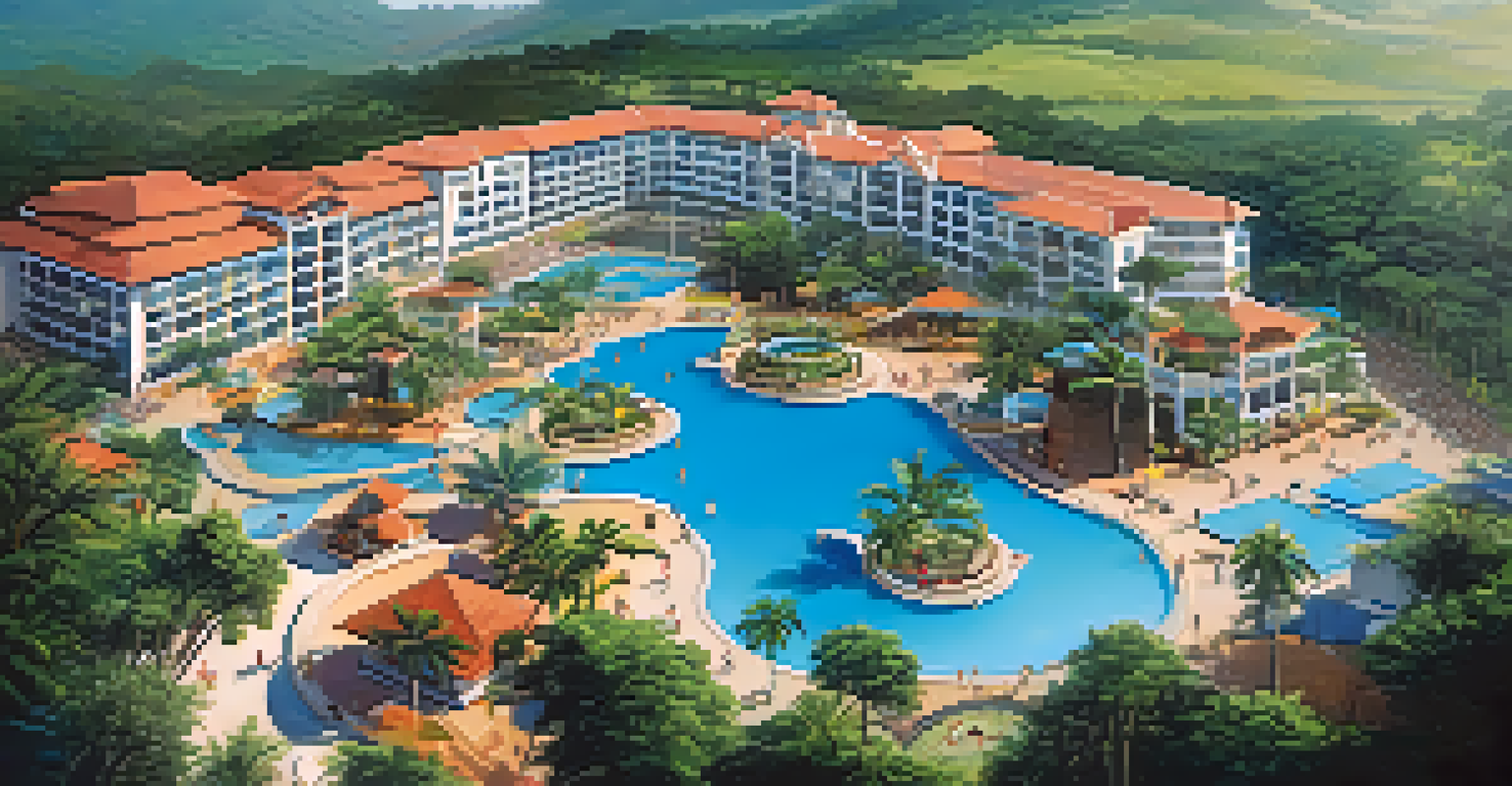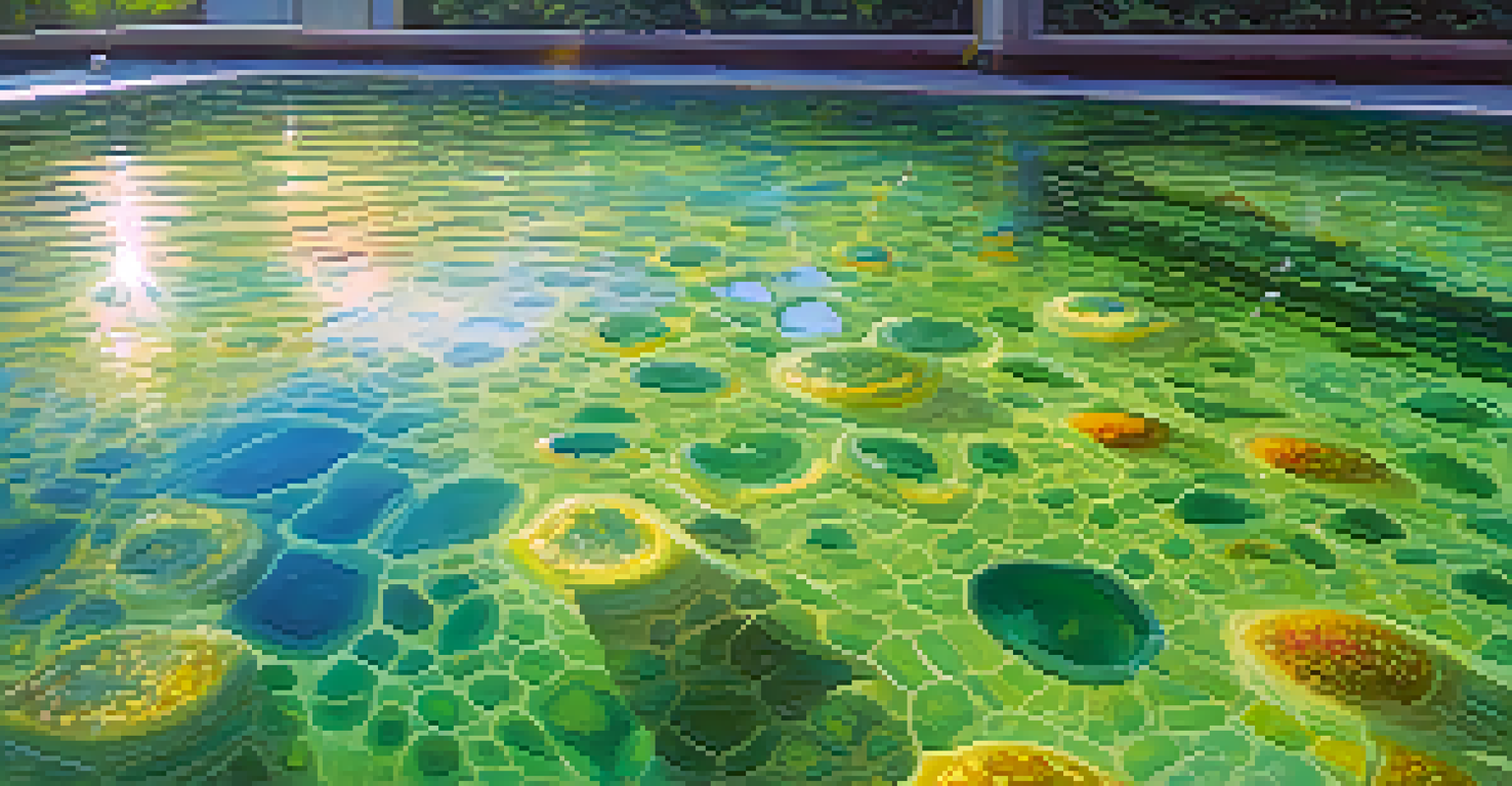Thermal Springs in Brazil: Nature's Healing Waters

What Are Thermal Springs and Their Benefits?
Thermal springs are natural hot springs that emerge from the earth, often enriched with minerals. These waters are heated by geothermal energy and can range in temperature from warm to boiling. Many people seek out these springs for their reputed healing properties, which can include relaxation, pain relief, and improved skin health.
Nature itself is the best physician.
The minerals found in thermal springs, such as sulfur, calcium, and magnesium, are believed to provide various health benefits. For instance, sulfur is known for its anti-inflammatory properties, making it a popular choice for those with arthritis or skin conditions. Bathing in these mineral-rich waters can also promote circulation and detoxification, leaving you feeling refreshed and rejuvenated.
In Brazil, these natural wonders attract both locals and tourists eager to experience their therapeutic effects. The combination of warmth and minerals creates a soothing environment that can melt away stress and tension. Whether you're looking to unwind after a long day or seeking relief from specific ailments, thermal springs offer a unique retreat into nature.
Top Thermal Springs Destinations in Brazil
Brazil boasts several renowned thermal spring destinations, each with its own unique charm. One of the most famous is Caldas Novas, located in the state of Goiás. Known as the largest hydrothermal resort in the world, Caldas Novas attracts visitors with its myriad pools and thermal water attractions that cater to families and wellness seekers alike.

Another gem is Serra de São Bento in Paraíba, which is famous for its beautiful landscapes and tranquil setting. Here, visitors can soak in naturally heated waters while enjoying the stunning views of the surrounding mountains. This intimate atmosphere makes it a perfect spot for those looking to escape the hustle and bustle of city life.
Healing Benefits of Thermal Springs
Thermal springs are rich in minerals like sulfur and magnesium, which are believed to promote relaxation, pain relief, and improved skin health.
Lastly, don't miss the hot springs of Poços de Caldas in Minas Gerais. This destination combines the benefits of thermal water with a charming town atmosphere, featuring parks, gardens, and historical architecture. The blend of relaxation and cultural exploration makes Poços de Caldas a must-visit for anyone traveling through Brazil.
The Science Behind Thermal Waters
What makes thermal springs so special? It all comes down to geothermal energy, which heats underground water as it moves through fissures in the earth's crust. This water absorbs minerals from surrounding rocks, creating a unique blend that contributes to the springs' healing properties. Understanding this process can enhance your appreciation for these natural wonders.
The greatest wealth is health.
The temperatures of thermal springs can vary widely, depending on their geological environment. Some springs are naturally warm, while others can reach temperatures above 100 degrees Celsius. This heat not only provides a soothing bathing experience but also helps to promote blood flow and relieve muscle tension, offering both physical and mental relaxation.
Research has shown that soaking in thermal waters can improve skin hydration and elasticity, reduce stress levels, and even alleviate certain chronic pain conditions. The combination of heat and minerals creates a therapeutic environment that can enhance well-being, making thermal springs a popular choice for those seeking alternative therapies.
Cultural Significance of Thermal Springs in Brazil
In Brazil, thermal springs are more than just a place to relax; they hold cultural significance for many communities. Indigenous peoples have long recognized the healing properties of these waters, often incorporating them into their traditional healing practices. This deep-rooted connection to nature underscores the importance of preserving these natural resources.
Many thermal spring resorts also emphasize wellness and holistic health, offering spa treatments, yoga classes, and wellness retreats. This trend reflects a growing interest in self-care and natural remedies, inviting visitors to not only enjoy the springs but also embrace a lifestyle centered on health and mindfulness.
Top Destinations in Brazil
Brazil offers stunning thermal spring destinations like Caldas Novas, Serra de São Bento, and Poços de Caldas, each providing unique experiences for visitors.
As tourism continues to grow, there's an increasing focus on sustainable practices in thermal spring areas. Efforts to protect the environment and promote responsible tourism ensure that these natural wonders remain available for future generations. By respecting the cultural significance and natural beauty of these locations, we can all contribute to their preservation.
Tips for Visiting Thermal Springs
When planning a visit to thermal springs, it's essential to consider the best time of year for your trip. Many springs are popular year-round, but visiting in the shoulder seasons can provide a more tranquil experience with fewer crowds. Additionally, local weather can influence your comfort level while soaking in the warm waters.
Pack accordingly for your thermal spring adventure! Essentials include a swimsuit, sunscreen, and a towel. Depending on the facilities, you might also want a change of clothes and some water to stay hydrated. Remember, the goal is to relax and enjoy the experience, so the more prepared you are, the easier it will be to unwind.
Lastly, don't forget to explore the surrounding area! Many thermal springs are located near beautiful parks, hiking trails, and charming towns. Taking time to connect with nature and discover local culture can enhance your visit, making it a well-rounded and memorable experience.
Health Considerations Before Visiting
While thermal springs offer numerous health benefits, it's essential to consider your personal health before diving in. If you have certain medical conditions, such as heart problems or skin allergies, consult with a healthcare professional before visiting. They can provide guidance on whether soaking in thermal waters is appropriate for you.
Additionally, listen to your body while enjoying the springs. It's easy to get carried away in the soothing warmth, but prolonged exposure to hot water can lead to dehydration or overheating. Taking breaks, staying hydrated, and knowing your limits will help you have a safe and enjoyable experience.
Sustainability and Cultural Value
The future of Brazil's thermal springs relies on sustainable practices and respect for their cultural significance, ensuring they remain a source of wellness for generations.
Lastly, be mindful of any potential allergens or irritants in the water. Some thermal springs may contain higher levels of specific minerals that could affect sensitive skin. Researching the springs you plan to visit can help you make informed choices and ensure a pleasant experience.
The Future of Brazil's Thermal Springs
As the popularity of thermal springs continues to grow, so does the need for sustainable practices to protect these natural resources. The tourism industry is becoming more aware of its environmental impact, prompting many resorts to adopt eco-friendly initiatives. This shift ensures that thermal springs remain accessible while preserving their delicate ecosystems.
Innovations in wellness tourism are also on the rise, with more resorts offering unique experiences that blend traditional therapies with modern practices. From holistic healing retreats to luxury spa treatments, visitors can expect an evolving landscape of wellness options that cater to diverse needs and preferences.

Ultimately, the future of Brazil's thermal springs lies in our hands. By prioritizing sustainability and respecting the cultural significance of these natural wonders, we can ensure that they continue to provide healing benefits for generations to come. Embracing this responsibility allows us to enjoy the soothing waters while safeguarding the environment and local communities.